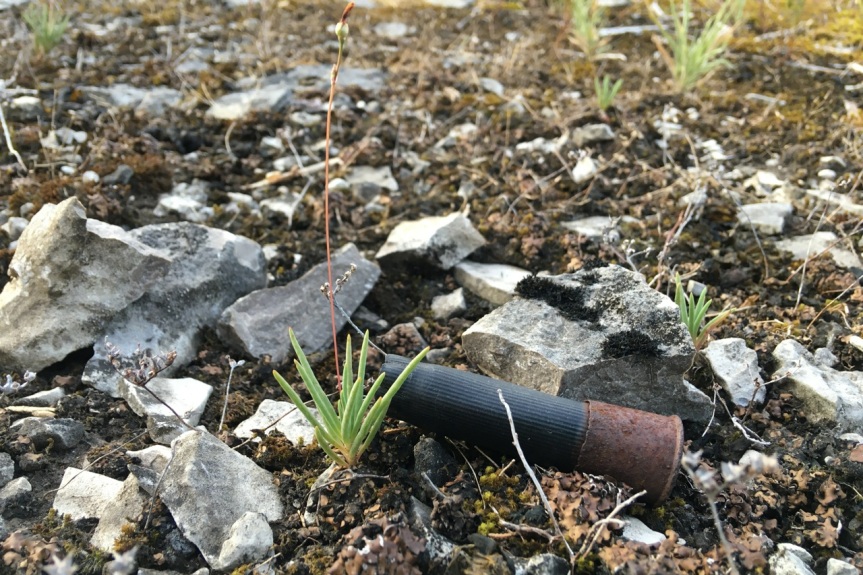I’m a fan of leaving “historic” trash in protected cedar glades. If you tell visitors cedar glades were used as dumps in the old days, they’ll probably forget. If you show visitors, they’ll probably remember. Old trash is in-your-face evidence that trash-land was trashed.
Really, what else was glade land good for? It was too shallow to plow, too bedrocky to build on, and too piddly for pasture. You could park a trailer, maybe. You could hunt. But year-round, a glade was the most convenient place to drain your engine oil, toss your bedsprings, abandon a washer. Sink-holes were a plus: they were made for swallowing garbage.
The bigger the trash, the bigger the lesson. Flat Rock Cedar Glade’s collection is spectacular. (I’d love to know who gathered it and when, and if it can stay.)
The lovely trail at Couchville has been tidied, but still reveals tiny trash, especially when the light is right. This morning’s low sun hit the broken glass—amber, green, clear—eddied at the margins of limestone pavements.

New trash is a clue to land use, too, but it’s just trash: stuff like fast food debris, whisky bottles. It goes into a Hefty bag, pronto.
Old trash can be beautiful. Rusty metal, thick crockery shards, Bakelite radiator knobs. But what’s even more beautiful is how glade life persists through trash. Sedges thread themselves through stitch holes in a shoe heel. A mini ecosystem builds inside the neck of a bottle. A flattened can drowns under waves of glade moss and reindeer lichen.
Not everyone is eager to look for or at garbage in a “natural” area, I realize. But it can be one feature pointed out on a good, general, interpretive hike.
Is there a Standard Interpretive Guide for leaders of glade hikes? I imagine the first step is to invite people to look at pretty flowers. Glade wildflowers are the standard lure, and rightly so.
Then, talk about the rare and endemic plants, starting with the particularly photogenic kinds.
Talk about why and how they grow here, which means talking about geology.
Mention the creatures which depend on these plants.
Show a shameful but gorgeous piece of old glade trash and talk about land use.
Build an appreciation and affection for cedar glade / barren complexes.
Make people want to tell friends.
Make people want to tell TDEC or Nature Conservancy when glade-land For Sale signs appear, especially when that land is adjacent to a protected site.
Let’s cultivate a culture of glade-saving. Because nowadays, glade land is threatened by more than just trash piles. Trash is temporary.
Development is forever.






A note about shotgun shells, new or old: if lead shot remains, I take the lead home to throw away. Lead shot is too toxic to leave behind: the pellets look like food to animals, and even if uneaten, lead gradually dissolves into the soil and water table.


Beautful, new way to look at nature as it interacts with humans. How to look at it positively. So important in non-natural habitats. CARRY ON!